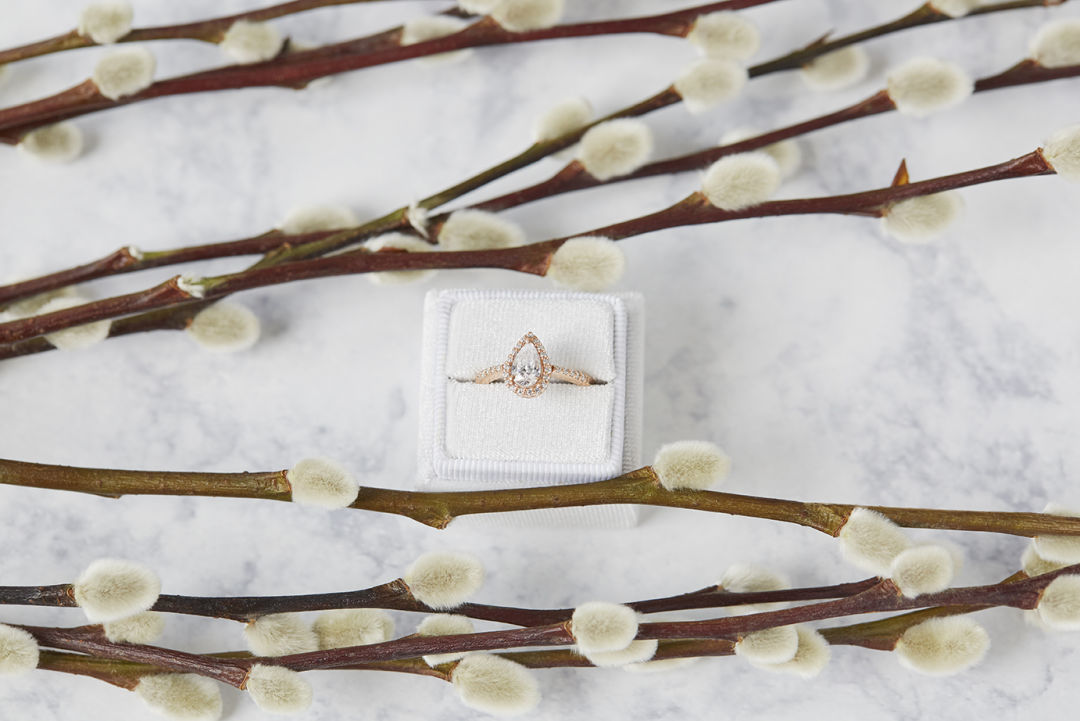The Rising Popularity of Lab-Grown Diamonds

Image: Clean Origin
The jewelry industry has been harboring a secret for the past decade, but it’s starting to come to light.
The secret? Lab-grown diamonds. In a growing trend, mined diamonds are losing ground as consumers flock to lab-grown diamonds for their jewelry needs. As this industry expands, it’s important for consumers to become educated about the differences between the two. This guide will teach you everything you need to know about lab-grown diamonds when considering your next diamond purchase.
Who Is Driving the Rise of Lab-Grown Diamonds?
The history of lab-grown diamonds reaches as far back as the 1950s. A young chemist by the name of H. Tracy Hall pioneered the process and technology that became the guidelines for creating lab-grown diamonds. While General Electric was given credit for the invention, it was Hall who made this dream a reality.
Since then, lab-grown diamonds have slowly blossomed, an advancement that is shaking the core of the mined diamond industry. While jewelry is one of the most well-known uses of diamonds, they are also widely used in manufacturing processes and are found in many components of everything from smartphones to cars.
Currently, millennials are driving the growth of lab-grown diamonds in the jewelry industry. For them, the purchase of a lab-grown diamond over a mined diamond just makes sense, both financially and ethically.
The Benefits of Lab-Grown Diamonds
Finances and ethics are just two of the many benefits that lab-grown diamonds offer. Here are the biggest reasons educated consumers are choosing lab-grown diamonds.
- Lab-Grown Diamonds are Budget-Friendly: Regardless of your financial situation, lab-grown diamonds will likely fit into your budget much more easily than their mined counterparts. Lab-grown diamonds are significantly less expensive than mined diamonds, meaning shoppers can get a much larger diamond for a fraction of the price.
- Lab-Grown Diamonds are Ethically Sourced: Lab-grown diamonds are just that — grown in a lab. There’s no negative ethical aspect of growing a diamond in a lab. However, mined diamonds have long been mired in claims that they are mined by people who aren’t paid well, that miners’ working conditions are unsafe, and that money generated from the mining industry funds illegal war efforts.
- Lab-Grown Diamonds are Eco-Friendly: Lab-grown diamonds can be produced using carbon-neutral renewable energy sources. Not only does this reduce the climate footprint, but it also avoids the pitfalls of diamond mining practices that harm the environment.

Image: Clean Origin
Lab-Grown Diamonds vs. Mined Diamonds
Lab-grown diamonds are chemically, physically, and visually identical to mined diamonds. Only by using advanced technology can one accurately differentiate between the two. Despite these facts, there’s an ongoing debate regarding the worth of lab-grown diamonds.
One common misconception is that mined diamonds are somehow “better” than lab-grown diamonds because they are rarities. However, mined diamonds aren’t rare. In fact, compared to other gems, mined diamonds are actually quite common.
Given that mined diamonds don’t necessarily offer significant advantages over lab-grown diamonds, and that the two are virtually indistinguishable from one another, it’s likely that more consumers will choose lab-grown diamonds.
Final Thoughts
Whether you’re in the market for a new piece of jewelry or you’re simply doing research about diamond alternatives, it pays to know everything you can about lab-grown diamonds. Not only will this help you make an informed decision, but it will also improve your chances of getting a deal on a great stone. Happy shopping!




































